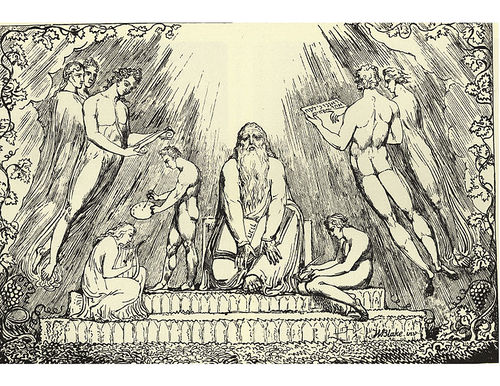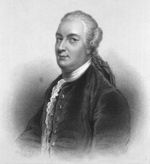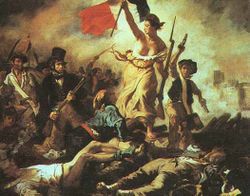Difference between revisions of "Category:Enochic Studies--1700s"
| (33 intermediate revisions by the same user not shown) | |||
| Line 1: | Line 1: | ||
{| style="margin-top:10px; background:none;" | |||
| style="background:white; width:65%; border:1px solid #a7d7f9; vertical-align:top; color:#000; padding: 5px 10px 10px 8px; -moz-border-radius: 10px; -webkit-border-radius: 10px; border-radius:10px;" | | |||
<!-- ===================== COLONNA DI SINISTRA ==================== --> | |||
{| cellpadding="2" cellspacing="5" style="width:100%; vertical-align:top; background:transparent;" | |||
{{WindowMain | |||
|title= [[Enochic Studies]] ([[1700s]]) | |||
|backgroundLogo= Bluebg_rounded_croped.png | |||
|logo= history.png | |||
|px= 38 | |||
|content= [[File:Enoch_Blake.jpg|500px|]] | |||
The page: '''Enochic Studies--1700s''', includes (in chronological order) scholarly and literary works in the field of [[Enochic Studies]], made in the [[1700s|18th century]], or between 1700 and 1799. | |||
[[File:Fabricius.jpg|thumb|150px|[[Johann Albert Fabricius]]]] | |||
[[File:James Bruce.jpg|thumb|150px|[[James Bruce]]]] | |||
}} | |||
{{WindowMain | |||
|title= Highlights ([[1700s]]) | |||
|backgroundLogo= Bluebg_rounded_croped.png | |||
|logo = contents.png | |||
|px= 38 | |||
|content= | |||
* [[Archivorum Veteris Testamenti (1703 Sgambati), book]] | |||
* [[Annotazioni sopra il libro degli Egregori del s. profeta Henoch (1710 Sarnelli), book]] | |||
* [[Codes pseudepigraphus Veteris Testamenti (1713-23 Fabricius), book]] | |||
* [[Dissertation sur le Patriarche Hénoch (1719 Calmet), essay]] | |||
* [[Paradise Lost (1760 Smith / Stillingfleet, Milton), oratorio]] | |||
* [[Dissertation sur Elie et Enoch (1762 Boulanger/Holbach), book]] | |||
}} | |||
== | {{WindowMain | ||
|title= [[Interpreters]] ([[1700s]]) | |||
|backgroundLogo= Bluebg_rounded_croped.png | |||
|logo = contents.png | |||
|px= 38 | |||
|content= | |||
* [[Pompeo Sarnelli]] (1649-1724) | |||
* [[Johann Albert Fabricius]] (1668-1735) | |||
* [[John Christopher Smith]] | |||
* [[James Bruce]] (1730-1794) | |||
}} | |||
|} | |||
|<!-- SPAZI TRA LE COLONNE --> style="border:5px solid transparent;" | | |||
<!-- ===================== COLONNA DI DESTRA ==================== --> | |||
| style="width:35%; border:1px solid #a7d7f9; background:#f5faff; vertical-align:top; padding: 5px 10px 10px 8px; -moz-border-radius: 10px; -webkit-border-radius: 10px; border-radius:10px;"| | |||
{| id="mp-right" cellpadding="2" cellspacing="5" style="width:100%; vertical-align:top; background:#f5faff; background:transparent;" | |||
{{WindowMain | |||
|title= [[Timeline]] ([[1700s]]) | |||
|backgroundLogo= Bluebg_rounded_croped.png | |||
|logo= history.png | |||
|px= 38 | |||
|content= [[File:1700s.jpg|thumb|left|250px]] | |||
'''''[[Enochic Studies]]''''' : [[:Category:Enochic Studies--2020s|2020s]] -- [[:Category:Enochic Studies--2010s|2010s]] -- [[:Category:Enochic Studies--2000s|2000s]] -- [[:Category:Enochic Studies--1990s|1990s]] -- [[:Category:Enochic Studies--1980s|1980s]] -- [[:Category:Enochic Studies--1970s|1970s]] -- [[:Category:Enochic Studies--1960s|1960s]] -- [[:Category:Enochic Studies--1950s|1950s]] -- [[:Category:Enochic Studies--1940s|1940s]] -- [[:Category:Enochic Studies--1930s|1930s]] -- [[:Category:Enochic Studies--1920s|1920s]] -- [[:Category:Enochic Studies--1910s|1910s]] -- [[:Category:Enochic Studies--1900s|1900s]] -- [[:Category:Enochic Studies--1850s|1850s]] -- [[:Category:Enochic Studies--1800s|1800s]] -- [[:Category:Enochic Studies--1700s|1700s]] -- [[:Category:Enochic Studies--1600s|1600s]] -- [[:Category:Enochic Studies--1500s|1500s]] -- [[:Category:Enochic Studies--1450s|1450s]] -- [[Enochic Studies|Home]] | |||
'''''[[Timeline]]''''' : [[2020s]] -- [[2010s]] -- [[2000s]] -- [[1990s]] -- [[1980s]] -- [[1970s]] -- [[1960s]] -- [[1950s]] -- [[1940s]] -- [[1930s]] -- [[1920s]] -- [[1910s]] -- [[1900s]] -- [[1850s]] -- [[1800s]] -- [[1700s]] -- [[1600s]] -- [[1500s]] -- [[1450s]] -- [[Medieval]] -- [[Timeline|Home]] | |||
}} | |||
{{WindowMain | |||
|title= [[Languages]] | |||
|backgroundLogo= Bluebg_rounded_croped.png | |||
|logo= contents.png | |||
|px= 38 | |||
|content= [[File:Languages.jpg|thumb|left|250px]] | |||
'''[[Enochic Studies]]''' : [[:Category:Enochic Studies--English|English]] -- [[:Category:Enochic Studies--French|French]] -- [[:Category:Enochic Studies--German|German]] -- [[:Category:Enochic Studies--Italian|Italian]] -- [[:Category:Enochic Studies--Latin|Latin]] -- [[:Category:Enochic Studies--Spanish|Spanish]] -/- [[Enochic Studies|Other]] | |||
}} | |||
|} | |||
|} | |||
== History of Research ([[1700s]]) == | |||
In the 18th century, the interest of scholars remained focused on the Enoch fragments of Syncellus, which provided the only textual evidence for 1 Enoch. They were published posthumously in the works of [[Scipione Sgambati]] (Archivorum veteris testamenti, 1703), and [[Johann Albert Fabricius]] (Codes pseudepigraphus Veteris Testamenti, 1713-23). Fabricius provided the first narrative of the history of research on the book of Enoch, recording in details all its citations in the Letter of Jude, in the Testaments of the Twelve Patriarchs and in the early Church Fathers, prior to its loss and (partial) recovery thanks to Scaliger and the works of 17th-century scholarship (Grotius, Pfeiffer, Grabe, and others). In addition, Fabricius offered a survey of Jewish Cabalistic texts (Zohar and Menahem Recanati), as well as Islamic and Hermetic sources, and discussed the status quaestionis about the possible existence of the book of Enoch in Ethiopia. | |||
In the first half of the 18th century, the Fragments of Syncelus were translated into French (Pierre Jurieu, Histoire critique des dogmes et des cultes, 1704), German (Johann Christian Nehring, Neun Bücher Sibyllinischer Prophezeyungen, 1719), and in English (by William Whiston, 1727-28 and partly, in A Universal History, vol.1, 1747; translated into Italian in 1765). In 1710 Pompeo Sarnelli authored the first commentary on the surviving portions of the Book the Watchers. Nicolas Antoine Boulanger and Paul-Henri Thiry d'Holbach used the Syncellus fragments in their work on Enoch (1762). | |||
Interest in Enoch remained strong in esoteric circles. The idea of the existence of a primeval wisdom played a formative role in the emergence of the Freemasonry (the first Lodge was officially established in London in 1717). In the self-understanding of the movement there was an unbroken line of continuity between the ancient Hermetic tradition and the Masonic experience and beliefs. The Freemasonic societies became the main vehicles for the spread of Hermetic traditions in Europe and the Americas. | |||
The Enlightenment dismissed Enochian Magic as irrational superstition, but retained the Hermetic idea of the existence of a primeval wisdom. In his ''Histoire de la philosophie hermétique'' (1742) [[Nicolas Lenglet Du Fresnoy]] repeated the claim that the secret knowledge given by the fallen angels survived the Flood through the teachings of Noah. In his view Hermes Trismegistus was the the son of Mezraim, son of Ham, son of Noah, therefore a direct descendent of Enoch. | |||
For more than two centuries, the book of Enoch had been a tantalizing presence. It was quoted in familiar text, such as the New Testament, the Church Fathers and in the Testaments of the Twelve Patriarchs; it was said to be in Ethiopia; from time to time it was rumored to be somewhere in some libraries in Europe; it had become partly known again thanks to the fragments of Syncellus; and yet nobody seemed to be able to get it. Eventually, in 1769 the explorer (and freemason) James Bruce reached Ethiopia (officially in search for the source of the river Nile) and in 1773 brought back to Europe three copies of the Ethiopic version of the whole 1 Enoch. One copy was presented to King Louis XV of France and ended in the Bibliothèque Nationale de Paris; a second was given to the Bodleian Library in Oxford; and the third was retained by Bruce for himself (and for the use of Scottish Freemasonry), being added to the Bodleian collections only after his death in 1794. | |||
The mss brought by Bruce were the first mss to be studied and published in Europe. Already in 1774 the Oxonian Coptic scholar, [[Charles Godefroy Woide]], published a short note about the manuscript of Enoch he had seen in Paris. However, the mss brought by Bruce in France and England were not the only manuscripts of Ethiopic Enoch present in Europe at that time. At Rome there was indeed another 18th-cent. copy of 1 Enoch, in the library of Card. [[Leonardo Antonelli]]. Its provenance has remained unknown until 2018, when [[Gabriele Boccaccini]] discovered that the Roman manuscript also came from Bruce, who donated it to the Pope in December 1773. Although it was examined by orientalist [[Agostino Antonio Giorgi]], the Ethiopic ms. remained, unpublished and untranslated, in the library of Card. [[Leonardo Antonelli]] (1730-1811) at [[Palazzo Pamphilj]] in Piazza Navona in Rome.<ref>[[Francesco Cancellieri]] offers a brief description of the library in ''Il mercato, il lago dell'acqua vergine ed il palazzo panfiliano nel Circo Agonale detto volgarmente Piazza Navona'' (Rome: Francesco Bourlié, 1811), pp. 140-41.</ref> Only several years after Leonardo Antonelli's death, in the 1820s, the existence of the Rome Enoch ms would become internationally known thanks to [[Angelo Mai]], who purchased it for the Vatican Library. | |||
@2014-18 - Gabriele Boccaccini, University of Michigan | |||
====Notes==== | |||
<references/> | |||
Latest revision as of 14:35, 19 December 2019
History of Research (1700s)
In the 18th century, the interest of scholars remained focused on the Enoch fragments of Syncellus, which provided the only textual evidence for 1 Enoch. They were published posthumously in the works of Scipione Sgambati (Archivorum veteris testamenti, 1703), and Johann Albert Fabricius (Codes pseudepigraphus Veteris Testamenti, 1713-23). Fabricius provided the first narrative of the history of research on the book of Enoch, recording in details all its citations in the Letter of Jude, in the Testaments of the Twelve Patriarchs and in the early Church Fathers, prior to its loss and (partial) recovery thanks to Scaliger and the works of 17th-century scholarship (Grotius, Pfeiffer, Grabe, and others). In addition, Fabricius offered a survey of Jewish Cabalistic texts (Zohar and Menahem Recanati), as well as Islamic and Hermetic sources, and discussed the status quaestionis about the possible existence of the book of Enoch in Ethiopia.
In the first half of the 18th century, the Fragments of Syncelus were translated into French (Pierre Jurieu, Histoire critique des dogmes et des cultes, 1704), German (Johann Christian Nehring, Neun Bücher Sibyllinischer Prophezeyungen, 1719), and in English (by William Whiston, 1727-28 and partly, in A Universal History, vol.1, 1747; translated into Italian in 1765). In 1710 Pompeo Sarnelli authored the first commentary on the surviving portions of the Book the Watchers. Nicolas Antoine Boulanger and Paul-Henri Thiry d'Holbach used the Syncellus fragments in their work on Enoch (1762).
Interest in Enoch remained strong in esoteric circles. The idea of the existence of a primeval wisdom played a formative role in the emergence of the Freemasonry (the first Lodge was officially established in London in 1717). In the self-understanding of the movement there was an unbroken line of continuity between the ancient Hermetic tradition and the Masonic experience and beliefs. The Freemasonic societies became the main vehicles for the spread of Hermetic traditions in Europe and the Americas.
The Enlightenment dismissed Enochian Magic as irrational superstition, but retained the Hermetic idea of the existence of a primeval wisdom. In his Histoire de la philosophie hermétique (1742) Nicolas Lenglet Du Fresnoy repeated the claim that the secret knowledge given by the fallen angels survived the Flood through the teachings of Noah. In his view Hermes Trismegistus was the the son of Mezraim, son of Ham, son of Noah, therefore a direct descendent of Enoch.
For more than two centuries, the book of Enoch had been a tantalizing presence. It was quoted in familiar text, such as the New Testament, the Church Fathers and in the Testaments of the Twelve Patriarchs; it was said to be in Ethiopia; from time to time it was rumored to be somewhere in some libraries in Europe; it had become partly known again thanks to the fragments of Syncellus; and yet nobody seemed to be able to get it. Eventually, in 1769 the explorer (and freemason) James Bruce reached Ethiopia (officially in search for the source of the river Nile) and in 1773 brought back to Europe three copies of the Ethiopic version of the whole 1 Enoch. One copy was presented to King Louis XV of France and ended in the Bibliothèque Nationale de Paris; a second was given to the Bodleian Library in Oxford; and the third was retained by Bruce for himself (and for the use of Scottish Freemasonry), being added to the Bodleian collections only after his death in 1794.
The mss brought by Bruce were the first mss to be studied and published in Europe. Already in 1774 the Oxonian Coptic scholar, Charles Godefroy Woide, published a short note about the manuscript of Enoch he had seen in Paris. However, the mss brought by Bruce in France and England were not the only manuscripts of Ethiopic Enoch present in Europe at that time. At Rome there was indeed another 18th-cent. copy of 1 Enoch, in the library of Card. Leonardo Antonelli. Its provenance has remained unknown until 2018, when Gabriele Boccaccini discovered that the Roman manuscript also came from Bruce, who donated it to the Pope in December 1773. Although it was examined by orientalist Agostino Antonio Giorgi, the Ethiopic ms. remained, unpublished and untranslated, in the library of Card. Leonardo Antonelli (1730-1811) at Palazzo Pamphilj in Piazza Navona in Rome.[1] Only several years after Leonardo Antonelli's death, in the 1820s, the existence of the Rome Enoch ms would become internationally known thanks to Angelo Mai, who purchased it for the Vatican Library.
@2014-18 - Gabriele Boccaccini, University of Michigan
Notes
- ↑ Francesco Cancellieri offers a brief description of the library in Il mercato, il lago dell'acqua vergine ed il palazzo panfiliano nel Circo Agonale detto volgarmente Piazza Navona (Rome: Francesco Bourlié, 1811), pp. 140-41.
Pages in category "Enochic Studies--1700s"
The following 16 pages are in this category, out of 16 total.
1
- Henochi historia ex Gen. 5 v. 21-24 repetita (1701 Schunck / Kesler), dissertation
- Archivorum Veteris Testamenti (1703 Sgambati), book
- Histoire critique des dogmes et des cultes (A Critical History of Dogmas and Cults / 1704 Jurieu), book
- Dissertation sur le Patriarche Hénoch (1719 Calmet), essay
- Neun Bücher Sibyllinischer Prophezeyungen (Nine Books of Sibylline Oracles / 1719 Nehring), book
- A Collection of Authentick Records Belonging to the Old and New Testament (1727-28 Whiston), book
- Ascension of Enoch (1728 Hoet), art
- De raptu Henochi et Eliæ in coelum (1739 Fischlin, Pfaff), dissertation
- Paradise Lost (1760 Smith / Stillingfleet), oratorio
- Dissertation sur Elie et Enoch (1762 Boulanger/Holbach), book
- Disputatio philologica de prophetia Henochi ex epist. Judæ v. XIV. (1769 Rezelius / Sommelius), dissertation
- De libro Henochi prophetico (1769 Sandmarck, Sommelius), dissertation
- De pietate & fatis Enochi (1789 Heber / Rost), dissertation
Media in category "Enochic Studies--1700s"
The following 2 files are in this category, out of 2 total.
- 1710 * Sarnelli.jpg 128 × 224; 8 KB
- 1713 Fabricius.jpg 326 × 500; 30 KB






